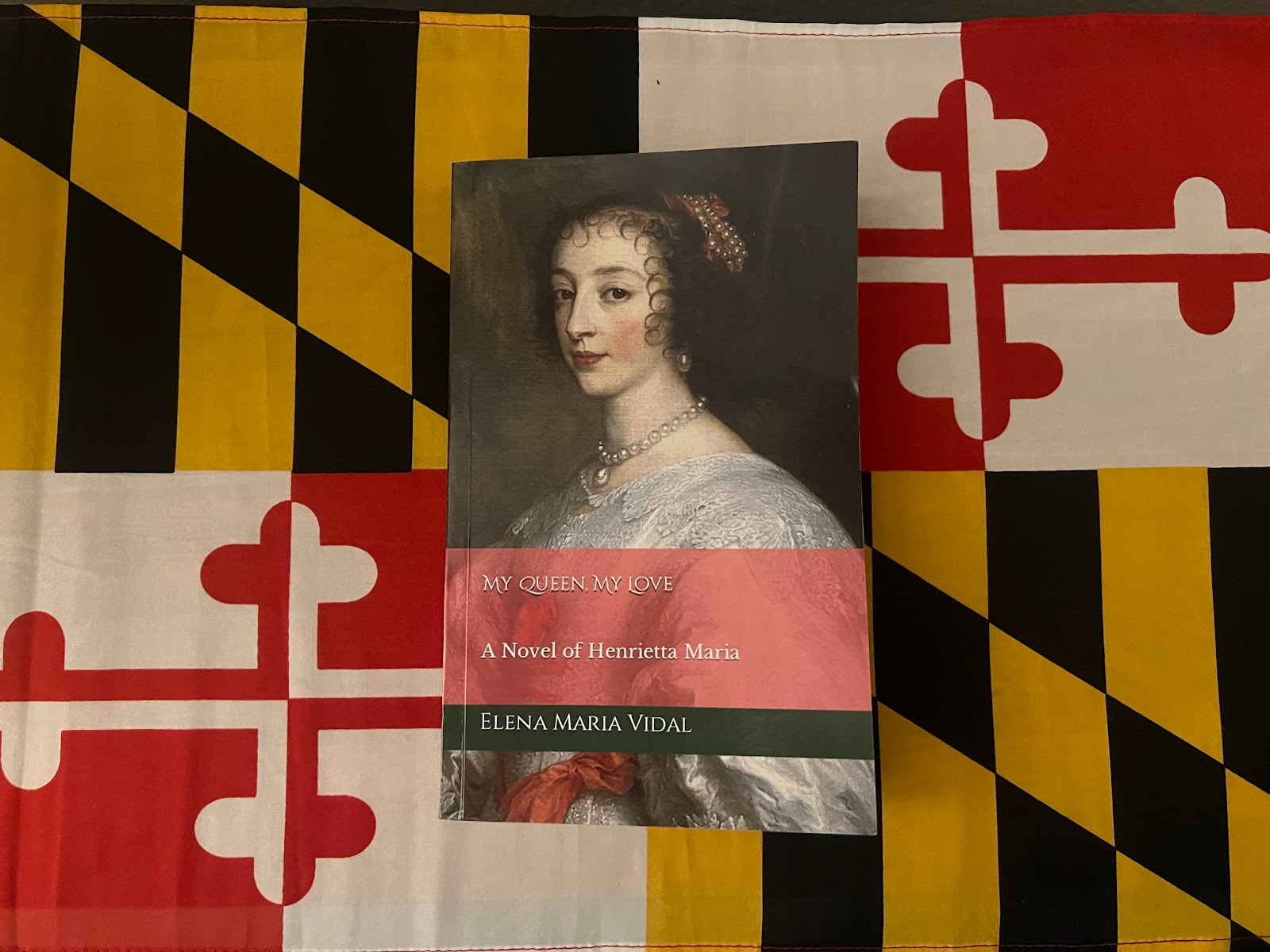"My Queen, My Love," which covers the title character's life from her childhood in France through the births of her own children in the 1630s on the eve of the English Civil War, is a historical novel, so includes fictionalized dialogue, but is firmly based on historical research like any biography. Its style vividly brings the complex and colourful world of the 17th century to life, from Italy [homeland of her mother Marie de Medici (1573-1642)] to France to England. The central importance of religion is evident from the outset. Daughter of the pragmatic convert Henri IV, the devoutly Catholic Henrietta Maria finds herself in an impossible situation as wife of the staunch Anglican Charles I in what is by then a predominantly and fervently Protestant country, with even the King's own high church Anglicanism increasingly deemed too "catholic" by some. While the author clearly shares Henrietta Maria's devout Roman Catholicism, it is to Vidal's credit that the sincerity of King Charles who believes that his Church of England is truly Catholic is depicted in a well-rounded manner. I particularly appreciated the writer's evident love of liturgical beauty as reflected in lavish descriptions of Catholic ceremonies including sacred music. Henrietta Maria's enjoyment of the secular arts, so scandalous to the dour Puritans especially her own participation in Masques, is a consistent theme as well.
Anglicans like me who revere Charles as a Martyr, aware of his and his wife's fervent loyalty to each other during the terrible trials of the Civil War which (after the time period covered by this book) would end in his execution and her widowhood, are accustomed to thinking of their marriage as an ideal devoted Christian one, as indeed it later became. However it must be admitted that this was not always the case. While vaguely aware that King Charles and Queen Henrietta Maria had had difficulties in the early years of their marriage, I had not thought much about the details until I read this book. One sensitive issue is that in order to gain French approval for their 1625 marriage Charles had had to make various promises, particularly those related to the Queen's Catholicism, that once back in England he finds himself unable to keep. It particularly galls her, understandably, that money from her dowry ended up being used to fund a war with her native France! While Vidal's Henrietta Maria never falters in her ultimately heroic love for Charles, the reader can also see without dismissing his point of view how Charles might have felt frustrated at times.
To the extent that the narrative of the challenging early years of their marriage has a villain, it is surely George Villiers, Duke of Buckingham (1592-1628). A favourite of Charles's father James I (1566-1625), Buckingham continues his leading role in British affairs as a sort of substitute older brother (Charles's real older brother Henry having sadly died at 18 in 1612) of the young and insecure new king. Wary of losing his pre-eminence should the Queen replace him as the King's most trusted confidant, Buckingham (though capable of great charm) does everything he can to undermine the Queen's position and behaves with shocking disrespect to her, while also being egotistically heedless of his unpopularity among the common people who tend to blame him rather than the King for the failures of his aggressive foreign policy. Charles either cannot or will not see this other side of him, and when Buckingham meets his end the reader is likely to feel that he had it coming. Whether the final chapter's theory about who was ultimately behind the assassination is true, I cannot say, but there is no doubt that Buckingham's death finally smoothes the path for Charles and Henrietta Maria to eventually enjoy a happier marriage.
Whether new to the period or an experienced student of Stuart history, any reader will be sure to finish this delightful book knowing Queen Henrietta Maria better than before, almost like a personal friend. I highly recommend it to anyone interested in royal history and look forward to further installments as given her tumultuous life there is certainly more material to come.

2 comments:
Thank you so much, Theodore. I am honored to be reviewed on this blog. I am delighted that you found the book worthwhile!
While cautious about passing judgments on historical personages without being thoroughly aquainted with the facts, I must say that on a strictly doctrinal basis Pius V's "Rēgnāns in Excelsīs" is the single worst papal document ever to come out in the name of the Church. Yes, for it combines the obssession of controlling dissent from Rome through violence, such as we see in Lucius III's "Ad abolendam" (A.D. 1184), and Innocent III's "Vergentis in Senium"; "Ad extirpanda", with the "matter of fact" papal giving away of entire peoples' land, wealth, rights and even lives to the Portuguese in Nicholas V's Romanus Pontifex (A.D. 1455), and at last with the god-awful official theology behind the inept condemnation of Erasmus at Trent (session VII, "Dē Baptismō", canon XIV), namely that of using the secular arm to "create faith" through coercion, a policy that implies a reading of "extra ecclesiam nulla salus" with a level of nuance worthy of the sedevacantist Diamond brothers. If catholic apologists would only stop trying to defend those on our side at any cost, they would see not only that these errors explain in great degree the apostasy from christianity, but also that they provide the key to interpreting Dignitatis Humanae and the ecclesiology of Lumen Gentium in a way that avoids the move from flamboyant ultramontanism to lefty republicanism and religious relativism.
Post a Comment